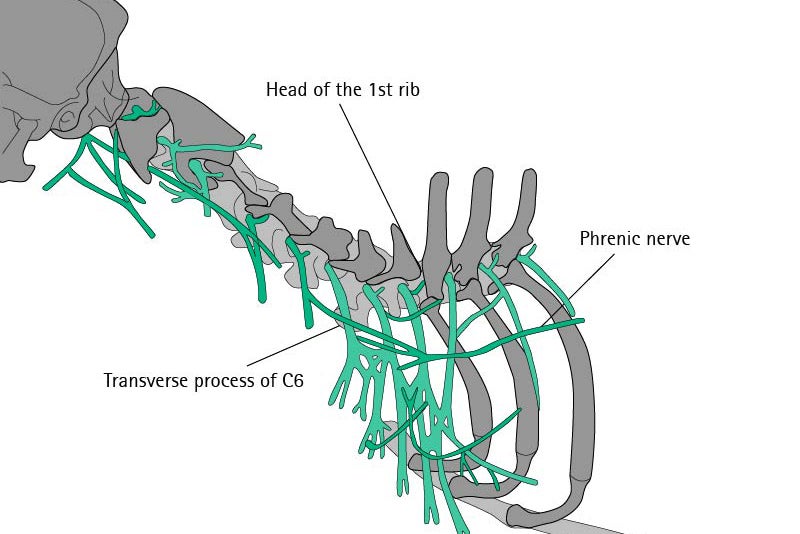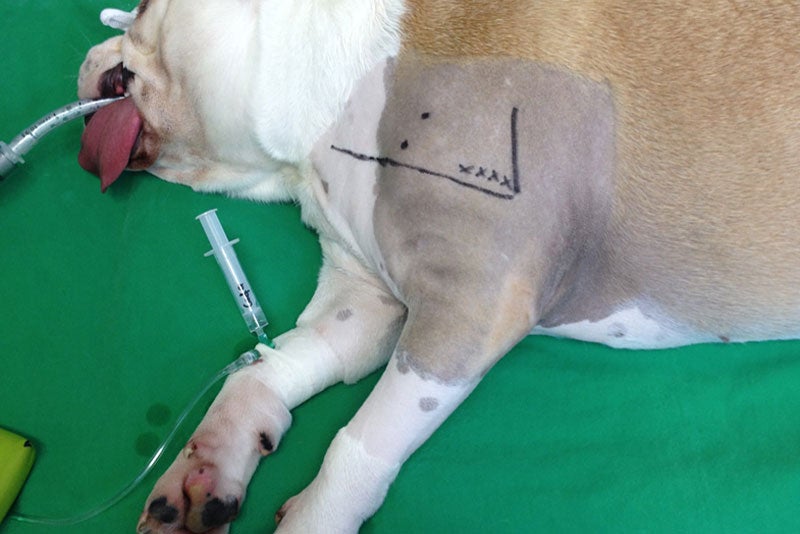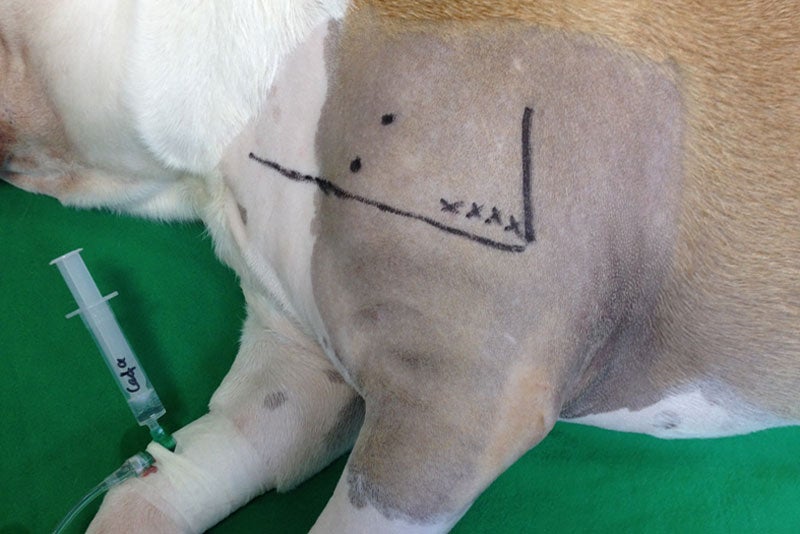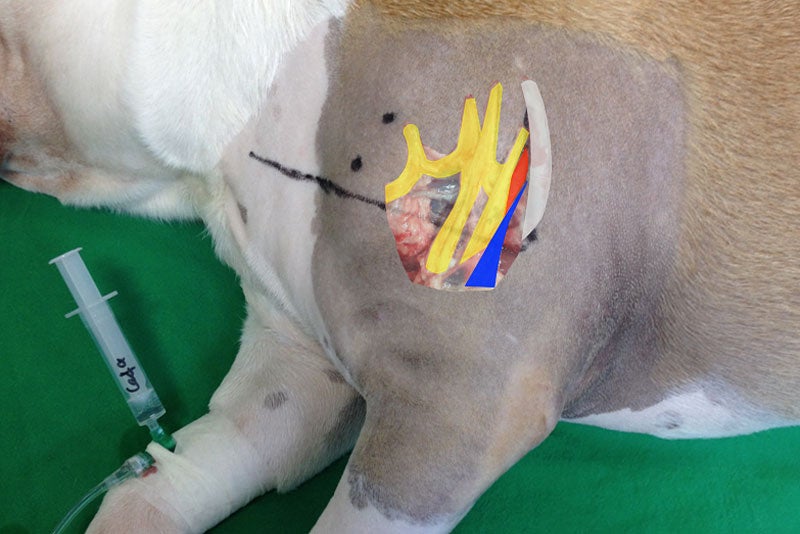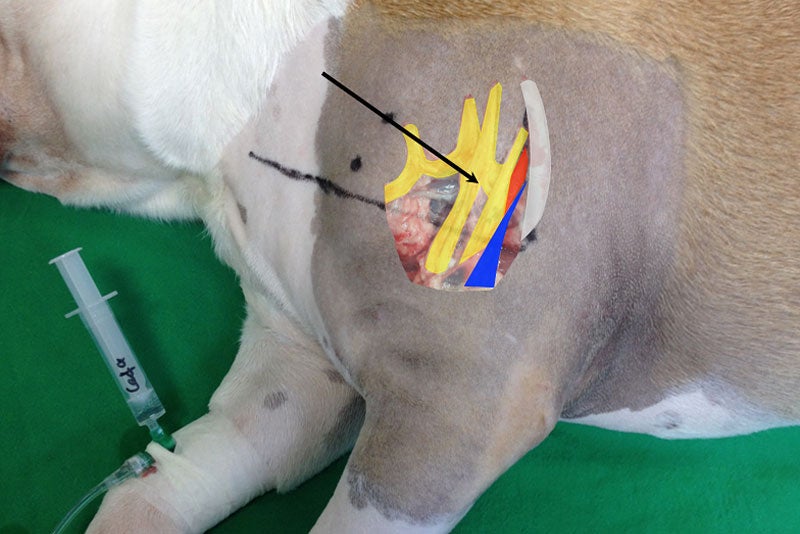Indication
Operations of the forelimb below the border of the middle to distal third of the humerus
Step by step
Local anesthetics
Brachial plexus block (Nerve stimulation)
Local anesthetics: Lidocain 1-2%, Mepivacain 1-2%, Bupivacain 0.5%, Ropivacain 0.75%
Initial setting NS: 0.5-1.0 mA, 2 Hz, 0.10 ms
Muscle contraction: elbow flexion and extension
Reduction of the amperage: in small increments to <0.5 mA
Correction of the needle position: minor corrections only, pull back needle, correct angle, re-advance needle
MSC control: to avoid block failure
Aspiration and injektion: slowly, Raj test, BSmart
Injection volume: 0.25-0.3 ml/kg
(Campoy et al. 2008)
Videos
-
Brachial plexus block (Nerve stimulation)
-
Brachial plexus block (Nerve stimulation/US)
(Campoy et al. 2010)
-
Brachial plexus block (Nerve stimulation/US)
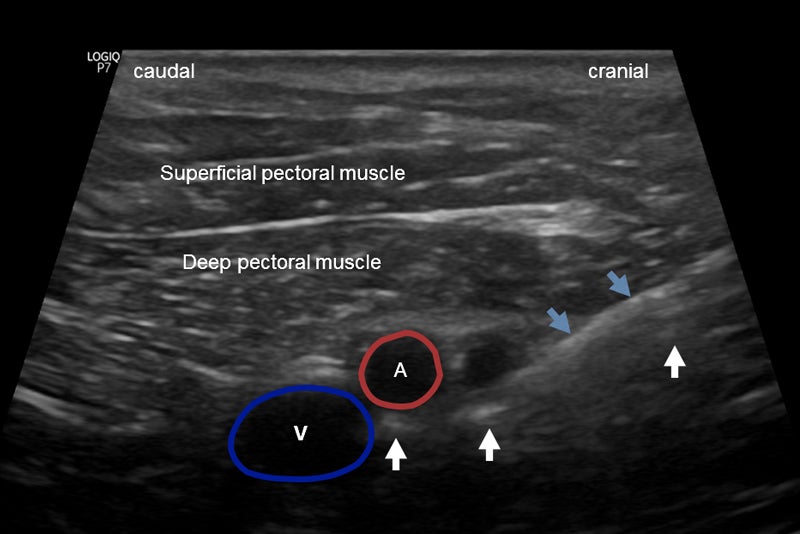
Axillary artery and vein (red/blue), nerves of the brachial plexus (white arrows), stimulation needle (blue arrows)

Disclaimer
As with any intervention in the body, peripheral nerve blocks also carry the risk of complications. The presented procedures and dosages are thoroughly reviewed and based on currently available scientific data and clinical experience but should only be considered as guidelines along the contents of the course. The responsibility for performing the nerve blocks shown on this site as part of any anesthesia regimen or pain management lies with the executing clinician. B. Braun Vet Care GmbH and Dr. Papadopoulos cannot be held responsible for any complications or adverse effects, that may arise from the described techniques or for any mistakes in the information provided.

